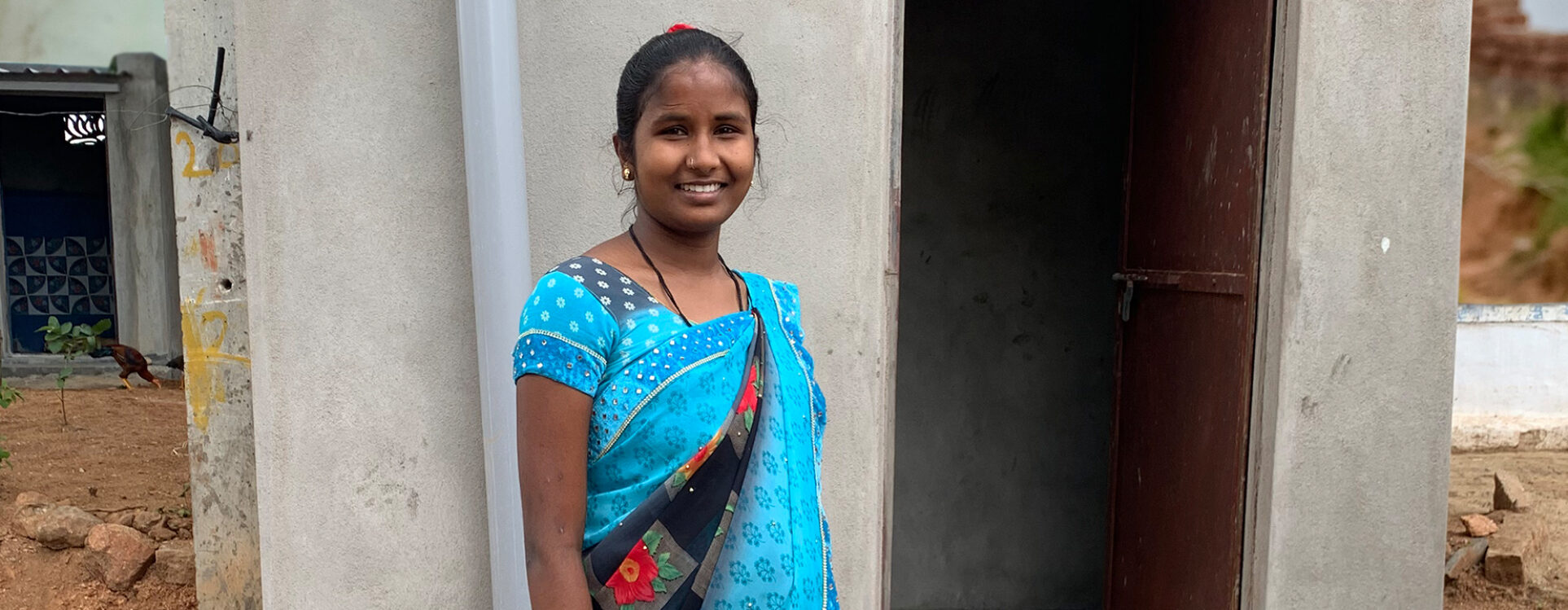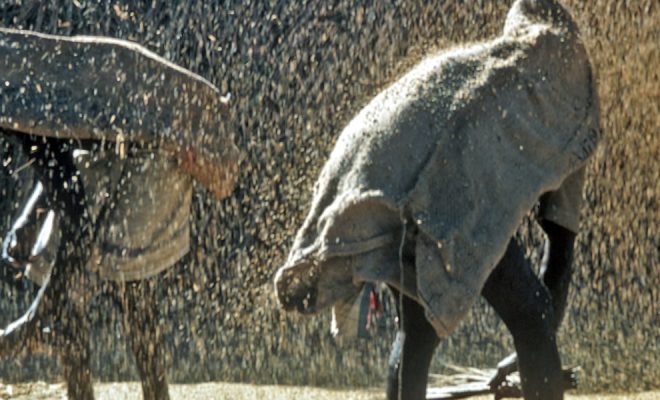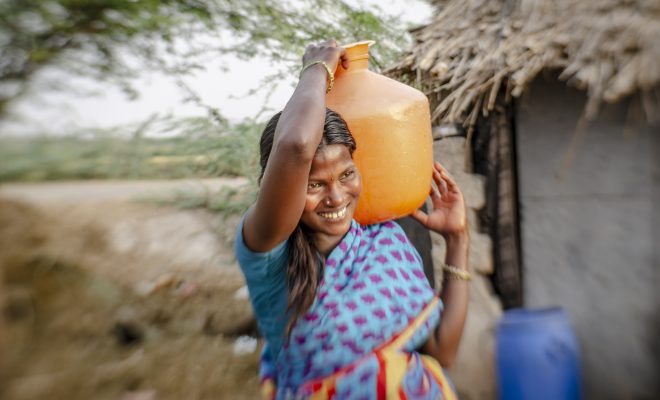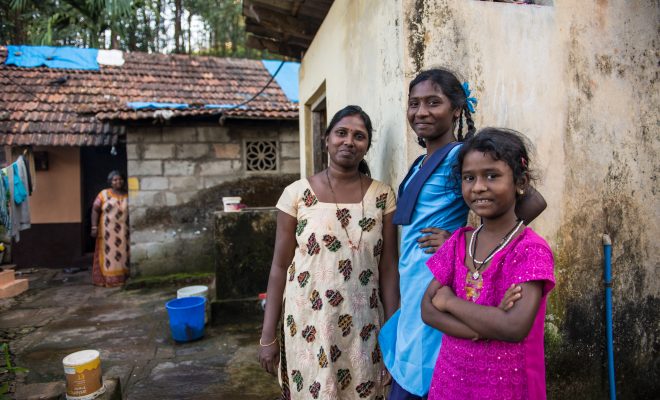In the Indian state of Madhya Pradesh, the monsoon season has begun. For Rooja Chouhan and many women in the village of Banjari, the rains brought mixed emotions. On the one hand, timely rainfall meant hope for their crops; on the other, it marked the start of serious challenges in meeting basic hygiene needs: the community latrines were far from her home, and to reach them, Rooja had to wade through mud and cross a stream that often overflowed.
Like many women in her community, she had to wait for the rain to ease or rely on help from others—something that caused her shame and wasn’t always possible. The last resort was defecating in containers or behind bushes near their homes.
This year, the monsoon no longer worries Rooja or the women from around 50 households in Dewas district. With household toilets now installed, the nightmare of accessing deteriorated public latrines is over. Rooja can focus on helping her family in the fields: “Now that we have a toilet at home, life is much easier. I feel safe and no longer have to worry. It has brought peace to our lives.”
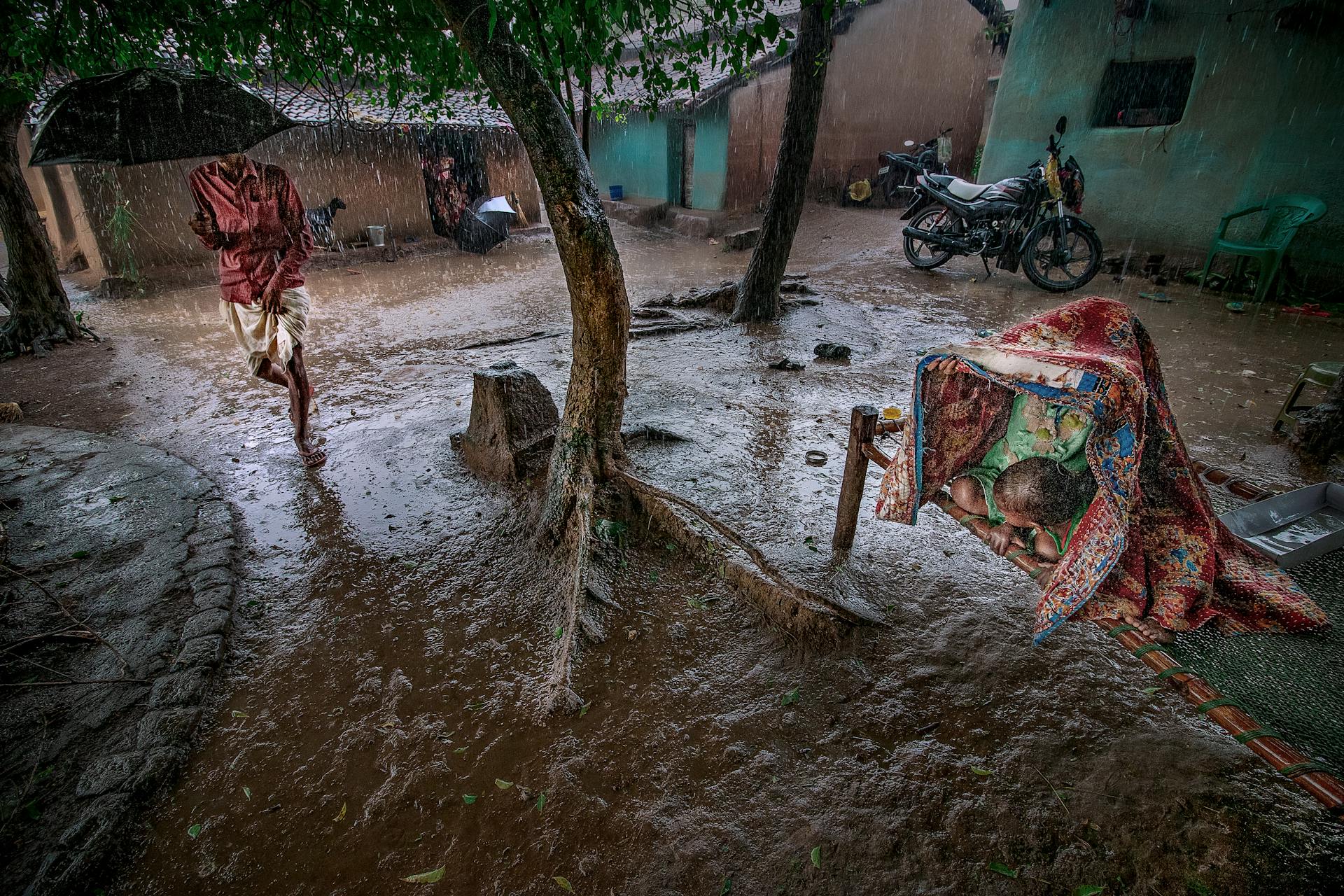
In India, the lack of household sanitation becomes most visible during the monsoon season. © pexels-sourav-das
A Barrier for the Dependent
Rain becomes a nightmare for people with disabilities. In the village of Kannathangal, in Tamil Nadu, Shenbagam used to help her husband Ravi, who has mobility issues, reach secluded bushes. Often, especially during heavy rains, their son had to assist.
Now, with a toilet at home, their life has changed radically: “He suffered so much. I always dreamed of having a toilet at home. Now, he can take care of himself and doesn’t need help to relieve himself. You can imagine the pain of having to ask for help with something so private. Now he is relieved and happy.” Shenbagam is one of the mothers from 22 families we supported with safe household toilets.
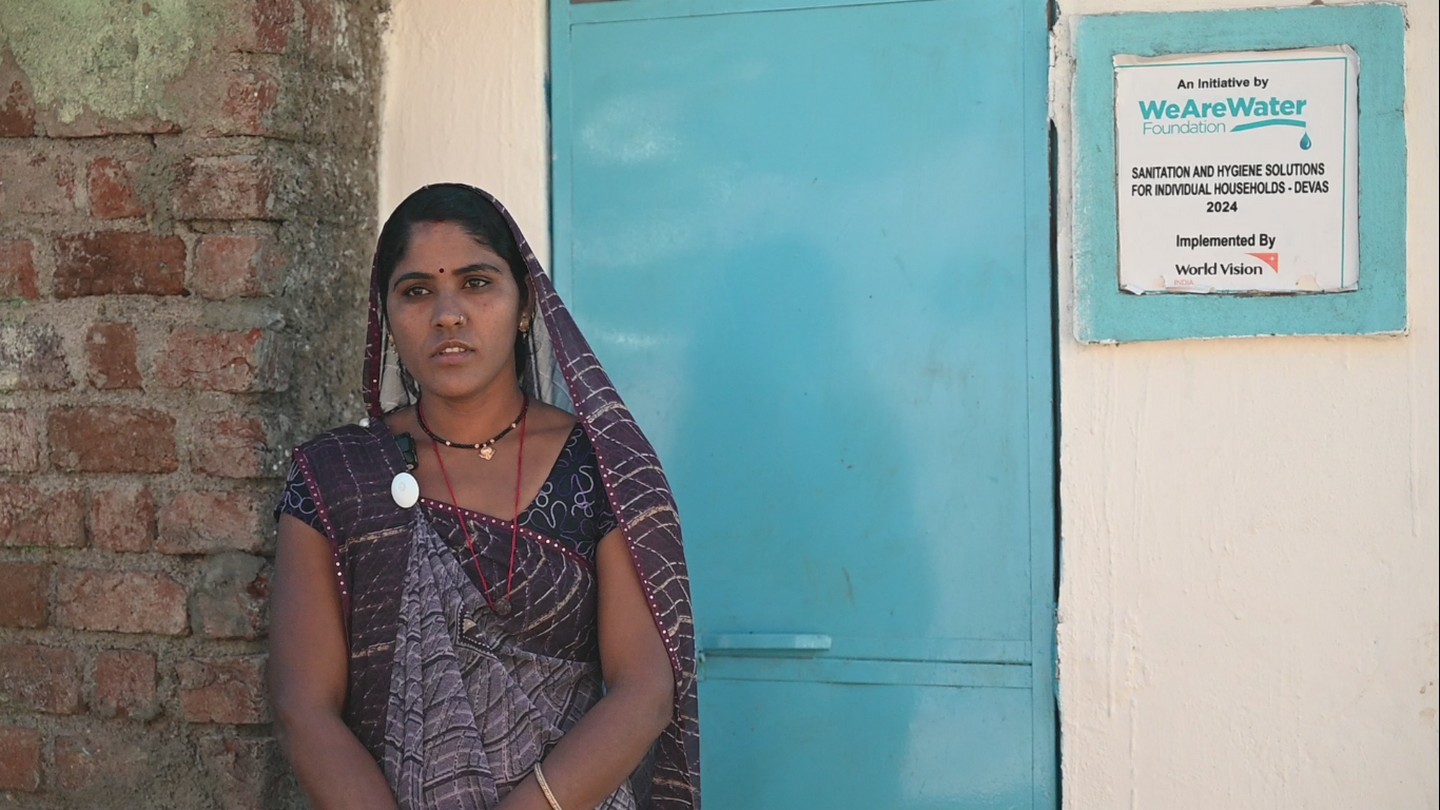
This year, the monsoon no longer worries Rooja or the women from around 50 households in Dewas district. With household toilets now installed, the nightmare of accessing deteriorated public latrines is over.
Health Risks—Passive and Active
Several studies have examined the health effects of suppressing the urge to urinate during the monsoon season (July–September). Beyond sleep disruption and fatigue, this practice has serious consequences.
Krishan Kumar Arggarwal, Vice President of the Indian Medical Association, warns: “Holding in stool or urine when the body signals the need leads to numerous illnesses. The small intestine may collapse, reducing nutrient absorption—a dangerous situation for undernourished populations already facing anaemia and weakened immune systems.”
Another risk is the buildup of intestinal gas due to slow digestion, which harms gut flora and increases vulnerability to infection. Given the poor quality of water many families consume, diarrheal diseases can become chronic in already weakened bodies.
Open defecation during heavy rain also poses severe health hazards. The same study notes that in Odisha, on the Bay of Bengal coast, when floods and mud surround villages, many women are forced to find elevated areas or, in extreme cases, use dry cow dung cakes as improvised toilet seats to avoid direct contact with the mud. Moreover, the washing areas women normally use become contaminated, worsening the health risks of open defecation.
A Toilet at Home Is Better Than a Shared One
According to the WHO/UNICEF Joint Monitoring Programme, open defecation remains widespread in rural India: in 2022, 154 million people still practised it, and around 74 million relied on shared facilities. These include community latrines designed to avoid contact with faeces, but many lack handwashing stations and are in poor condition. In urban slums, 2.8 million people still defecated outdoors, while 75 million shared toilets.
According to think tank SPRF India, despite progress through the Swachh Bharat Abhiyan (Clean India Mission), cultural and social barriers—such as the caste system—still hinder toilet use, especially in states like Rajasthan and Madhya Pradesh, where 25% to 53% of people continue open defecation even when facilities exist. The problem worsens during the rainy season.
Swachh Bharat Abhiyan must continue to progress. One major challenge has been the lack of reliable data; therefore, the government has ramped up efforts through broad social surveys. This June, a new round of Swachh Survekshan Grameen began in 21,000 villages to assess sanitation, waste management, water access, and toilet usage. The goal is to identify gaps and plan improvements, especially where infrastructure and adoption remain low.
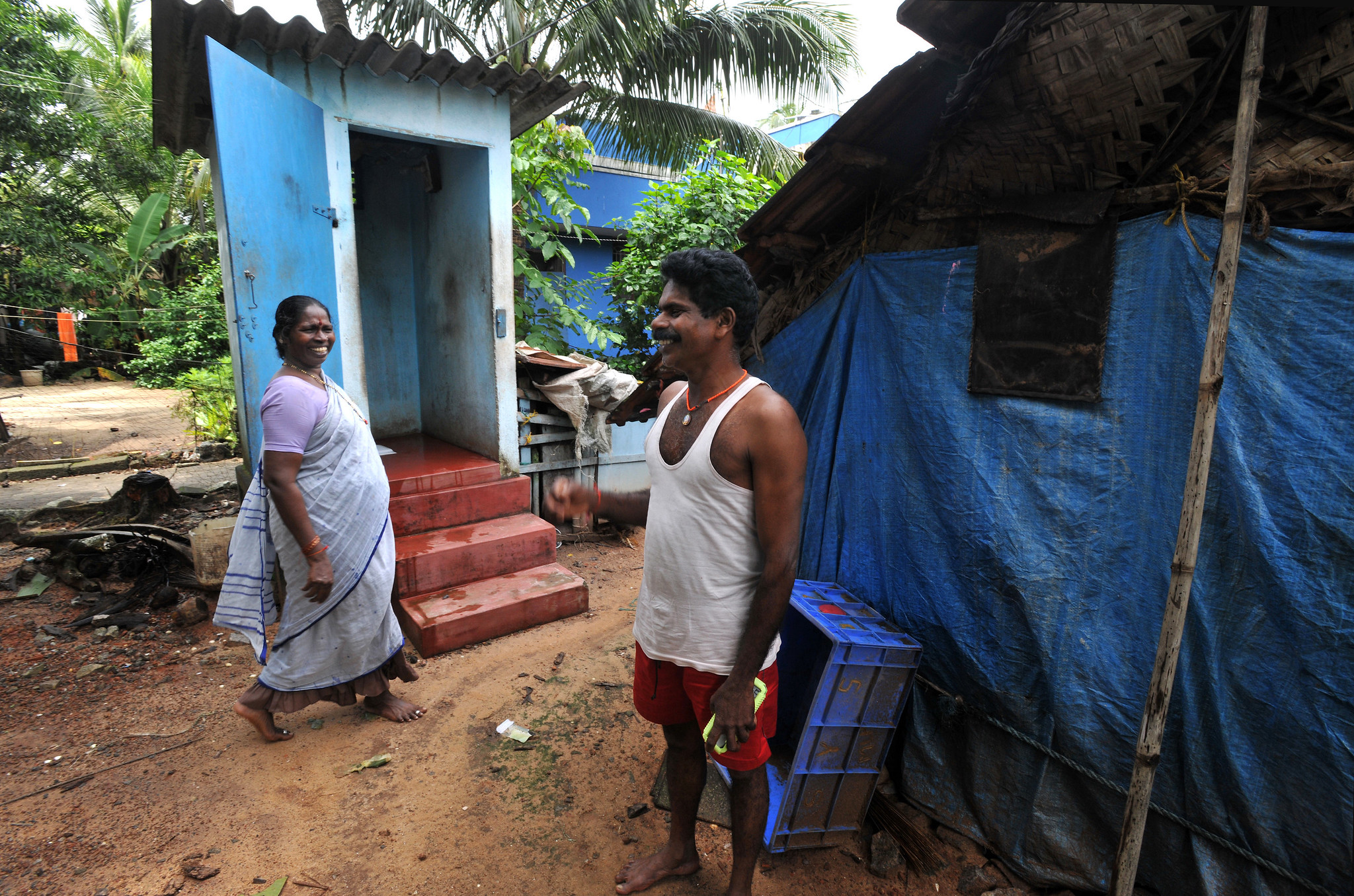
According to the WHO/UNICEF Joint Monitoring Programme, open defecation remains widespread in rural India: in 2022, 154 million people still practised it, and around 74 million relied on shared facilities. ©ADB
A Silent Paradox
The monsoon is vital to India. Six hundred million people depend directly or indirectly on the rains for their food security and economy. Of them, 250–300 million are dryland farmers watching the skies: too much or too little rain can mean the difference between a successful harvest and family ruin.
It must stop being paradoxical that the same rain that sustains families also brings indignity and illness to millions of women, the elderly, and people with disabilities.


